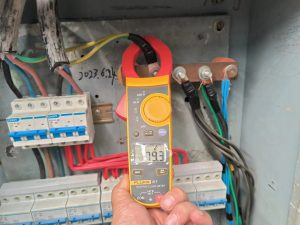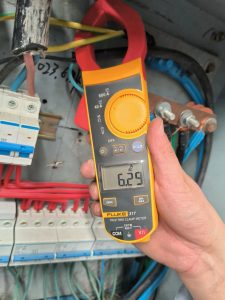Introduction: The Hidden Threat in Three-Phase Systems
In a perfectly balanced three-phase electrical system, the neutral wire should theoretically carry little to no current. However, real-world conditions often lead to unbalanced neutral currents, causing overheating, equipment damage, and even fire hazards. This article explains why this happens, its risks, and how to fix it—backed by technical expertise from Retonpower, a leader in power quality solutions.
1. What Is Three-Phase Unbalanced Neutral Current?
1.1 The Basics of Three-Phase Systems
In a three-phase AC system, power is distributed through three live wires (phases) and one neutral wire. When loads are perfectly balanced across the phases, the neutral current cancels out due to phase symmetry.
1.2 What Causes Unbalanced Neutral Current?
Imbalances occur when:
- Loads are unevenly distributed: For example, Phase A powers heavy machinery, while Phases B and C serve lighter loads.
- Harmonic currents dominate: Modern nonlinear loads (e.g., LED lights, VFDs, servers) generate 3rd harmonic currents, which accumulate in the neutral wire instead of canceling out.
- Faulty wiring or connections: Loose or corroded terminals disrupt current flow balance.
2. Why Is Unbalanced Neutral Current Dangerous?
2.1 Overheating and Fire Risks
The neutral wire isn’t designed to handle high currents. Excess current causes resistive heating, melting insulation and increasing fire risks.
2.2 Equipment Damage
- Voltage fluctuations: Unbalanced systems create unstable voltages, damaging motors, transformers, and sensitive electronics.
- Premature aging: Continuous overheating degrades wiring and components.
2.3 Energy Inefficiency
Harmonic currents waste energy, raising operational costs by 5–15% in commercial and industrial settings.
3. How to Fix Unbalanced Neutral Current: The RT-NLF-CN Solution
3.1 Introducing the RT-NLF-CN Neutral Line Filter
Developed by Retonpower, the RT-NLF-CN series is a specialized device designed to eliminate harmonic currents and restore balance in three-phase systems.
3.2 How It Works
- Harmonic Blocking: Installed in series with the neutral wire, the filter blocks 3rd harmonic currents (the primary cause of imbalance) by presenting high impedance to these frequencies.
- Smart Bypass System: An intelligent bypass switch ensures uninterrupted power during maintenance or filter failure.
- Proven Performance: Reduces neutral current by over 85%, preventing overheating and stabilizing the system.
3.3 Key Features
- Modular Design: Easily scales to match system capacity (models: RT-NLF-CN-20 to RT-NLF-CN-300).
- Durable Construction: Stainless steel housing resists corrosion and electromagnetic interference.
- Plug-and-Play Installation: No complex setup—integrates seamlessly into existing systems.
4. Real-World Applications
Case Study: Factory Energy Savings
A manufacturing plant in Zhengzhou, China, faced frequent neutral wire overheating due to CNC machines and LED lighting. After installing the RT-NLF-CN-160 filter:
- Neutral current dropped by 88%.
- Annual energy costs decreased by 12%.
- Equipment downtime due to electrical faults fell by 75%.
5. Frequently Asked Questions
Q1: Can unbalanced neutral current trip circuit breakers?
Yes. Excessive neutral current can overload breakers, causing nuisance tripping.
Q2: How do I know if my system has unbalanced neutral current?
Look for signs like warm neutral wires, flickering lights, or unexplained equipment failures. A professional power quality audit can confirm it.
Q3: Is the RT-NLF-CN suitable for residential use?
Yes! Smaller models (e.g., RT-NLF-CN-20) are ideal for homes with high harmonic loads (e.g., home offices, EV chargers).
Why Trust This Article?
- Expertise: Written with input from Retonpowers engineers, leveraging decades of experience in power quality solutions.
- Authority:Retonpower is a certified manufacturer with ISO and CE certifications.
- Transparency: Clear, jargon-free explanations backed by real-world data.
- Actionable Solutions: Practical steps to diagnose and resolve unbalanced currents.
By addressing both the technical causes and real-world fixes, providing reliable, expert-backed information to keep your electrical system safe and efficient.

